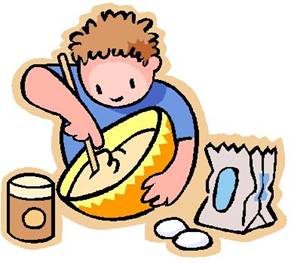I believe that technology has a big part role in children’s learning, whether it being in the earlier days or today. As technology involves everything from a pencil to a computer; it shows that with everything the children are doing within their play they are using technology to enhance their learning. I feel that for the children to get the best learning out of their time at day-care, they need to have the best use out of all technologies. This means that the children have access to all kinds of technology .
Thank you to all that commented on my blogs, I was extremely glad that we could do this group assignment together, but based at home. It makes it a lot easier than trying to arrange times that work with everyone to get together and work on the assignment
Lyian’s comment http://mel-technologywithinece.blogspot.com/2011/09/tools-for-cookingwhat-do-we-need.html?showComment=1316910650561#c2171564006860515637 on my cooking blog was a great way to look other perspectives. Cooking seems to be popular and to see what other children do was a great way for me to think about how I can extend on my own children’s play. I loved the electronic jug; I might have to look into acquiring one for my centre. Emma http://mel-technologywithinece.blogspot.com/2011/09/tools-for-cookingwhat-do-we-need.html?showComment=1316934409651#c4928092514539675298 had some great questions for me; I feel that the question about the children bringing in a cooking tool from their own culture is fantastic idea. As it brings the connection from home and also allows us to explore different cultures. I thank you Luahine, http://mel-technologywithinece.blogspot.com/2011/09/tools-for-cookingwhat-do-we-need.html?showComment=1316836977567#c2286171618874862999 for reminding me that there are disadvantages as well as advantages with technology. It will be a great thing to teach the children. Faa's comment http://mel-technologywithinece.blogspot.com/2011/09/tools-for-cookingwhat-do-we-need.html?showComment=1317264367125#c1312384794693236268 on finding out the children's views, made me think again about what they would think. I feel the best way to get a result is just by next time we do some cooking providing them with an electric tool, and taking it from there as we all know when we expect it to go one way, it tends to go another.
Thank you girls, for making me feel that I’m not the only one that thought of technology being just digital. Emma’s comment http://mel-technologywithinece.blogspot.com/2011/09/glue-sellotape-scissors-galoreglue-gun.html?showComment=1316936249153#c3851566218874319863 has made me think about ‘inventing’. I also believe that we take such small technology for granted and to think about the inventing side of it might be a good idea to try and do with children. I wonder where that may lead us. Thinking about this sort of technology again, I agree with Lyians comment http://mel-technologywithinece.blogspot.com/2011/09/glue-sellotape-scissors-galoreglue-gun.html?showComment=1316909159329#c470324529957230968 about how it is used to help with problem solving or meeting their needs. I feel to make this happen I need to encourage children a bit more to think about certain things they could use to help. I believe what Luahine said http://mel-technologywithinece.blogspot.com/2011/09/glue-sellotape-scissors-galoreglue-gun.html?showComment=1316837336218#c7962879183103243629 , it’s all about scaffolding. Teaching them and then letting them develop even further is the best way for them to learn. I really had to think about Faa's comment http://mel-technologywithinece.blogspot.com/2011/09/glue-sellotape-scissors-galoreglue-gun.html?showComment=1317265602469#c3821353047030922778 on how I could extend on the learning with the glue gun. I really don't know at this point, I feel that I ave to give the children more opportunities to us the glue gun for me to work out an extension.
I believe that one of the best way to empower children when learning about new technologies to let the children explore them themselves. I was very grateful that Luahine http://mel-technologywithinece.blogspot.com/2011/08/cameras-at-work.html?showComment=1316838019295#c99305193620492031 and Emma picked up on that through my reflection. Taking Emma’s suggestions http://mel-technologywithinece.blogspot.com/2011/08/cameras-at-work.html?showComment=1316938366311#c736961737350175362 into consideration, I feel these are great ideas to create a follow on for the children’s interest. It will be a great way to extend on different digital technologies.
Thank you again for the comments, they have made me stop and think about ideas about technologies and how they affect children and their learning.
